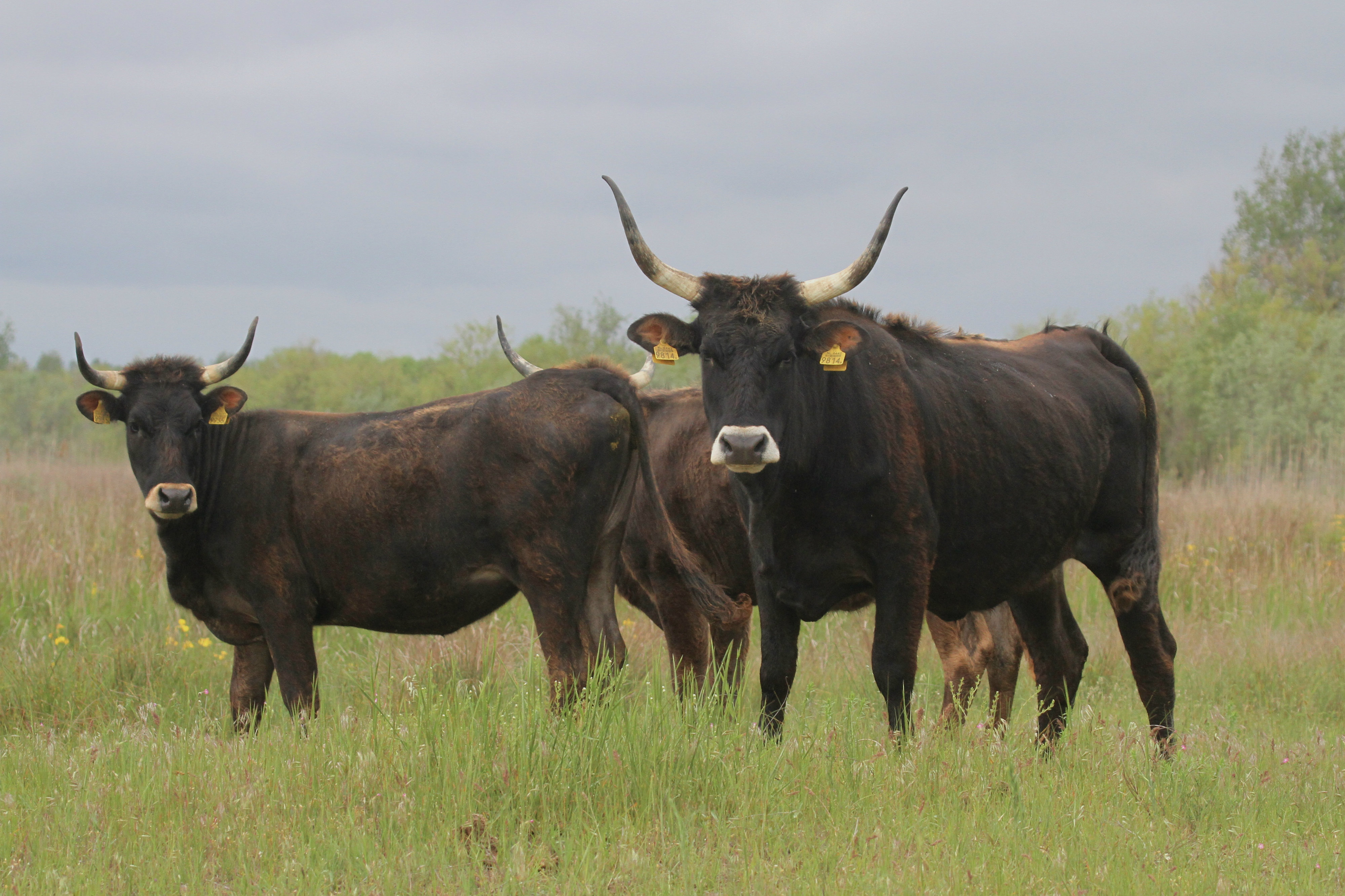Kempen~Broek (NL)
 |
| ©Geer vanne Smeed, published on columbusmagazine.nl |
Herpeduin (NL)
All the photos are copyright of Ingrid van Thiel, published on facebook. The upper photo on the left probably shows one of the un-crossed cows released there (? Limia), next to it most likely a cross cow which I believe is the same as on the middle photo. The cow on the lower photo is probably a cross cow as well. They could be daughters of the beautiful breeding bull at Herpeduin. I could speculate now about their breed composition, but I will not because it could be anything. However, the Exmoor ponies could give us a clue about their size. The photos as much as this one indicate that they are about the same size as the cross cows at the withers, and Exmoor ponies are rather stable in size between 115 and 130cm at the withers according to Wikipedia.
Danube Delta (Romania)
 |
| ©Frans Schepers on rewildingeurope.com |
Video
This video on facebook shows a group of animals at Kempen~Broek, including a lot of (?)young bulls that seem to have a good body and horn shape. I like those bulls very much, they have a good overall aspect. At least one of them could be the young Maronesa bull imported several years ago. Also, some of the cows have Maremmana-sized but forwards-facing horns. Now they just need a breed for the sufficient horn thickness.
I keep on experiencing the same situation with the cattle of the Tauros Programme. One has to pick the pictures together from various sources, with no information given on the ancestry of the cattle. As good as some of these animals look, as frustrating it is not to know what these animals actually are. This is the main reason why I write that few on the cattle of the Tauros Programme here, although they already have more than hundred cross animals. I simply cannot write much about cattle that I do not know. Which is a pity, because the project is using a lot of interesting breeds, and I would love to see how all those interesting combinations work out. So far, they have only used one bull for promo (Manolo Uno; although they have a lot of very interesting bulls) and it also is the only cross bull of 100+ cross individuals for which the breed combination has been revealed (Maremmana x Pajuna)
Thus I would suggest to improve the Tauros cattle PR work in the following way. The Tauros Programme's website has a gallery (http://www.taurosprogramme.com/photogallery/photogallery/), that's a good start. But it shows only a few individuals, and no information on their background is given. Even if the project had not set up a herdbook yet, the identity of the animals should be more or less traceable since they did an inheritance check. So they could give some information of the animals' descent in the caption of the picture. It would not be that much work to write if there is someone who really knows the parentage structure of the herds, f.e. (Maremmana x Pajuna) x (Maremmana x Highland) and the work is done for a second-generation cross. Just tagging an animal as a "second-generation cross" does not say much, especially since the project also likes to call their first-generation cross a second-generation cross. They could present all the breeding bulls and where they are used, plus a number of cows per location. Of course crossed individuals would be the most interesting.
I assume that the Tauros Programme already has something like a herdbook or keep track of their crosses in some way. The Heck brothers were criticized for not keeping track of their crosses, and not doing so can be disadvantageous in the early phase of breeding. So a more detailed promotion of their cattle would just require someone to take photos of the cattle in the herds or seize those that have already been taken, choose individuals that could be interesting for whatever reasons, look up its ancestry and present it in the gallery. It would be similar work like I did with the Lippeaue Taurus cattle herds and takes only a few hours. It could be done on one weekend and would remain comparably up to date for about one year.
Although the Tauros Programme does a lot of promo, it has presented only very, very little of its animals, although they have much already now in 2017. This is a pity. Presenting more animals and giving a bit of useful information on their ancestry would not consume all too much time, but would enable people to get a better and deeper insight into their herds. This would be beneficial for the project in general, as people would see that they have way more than just a couple of individuals and only one grown bull, and I am sure that I am by far not the only person out there who would like to know more about the Tauros cattle we see on the web.




No comments:
Post a Comment